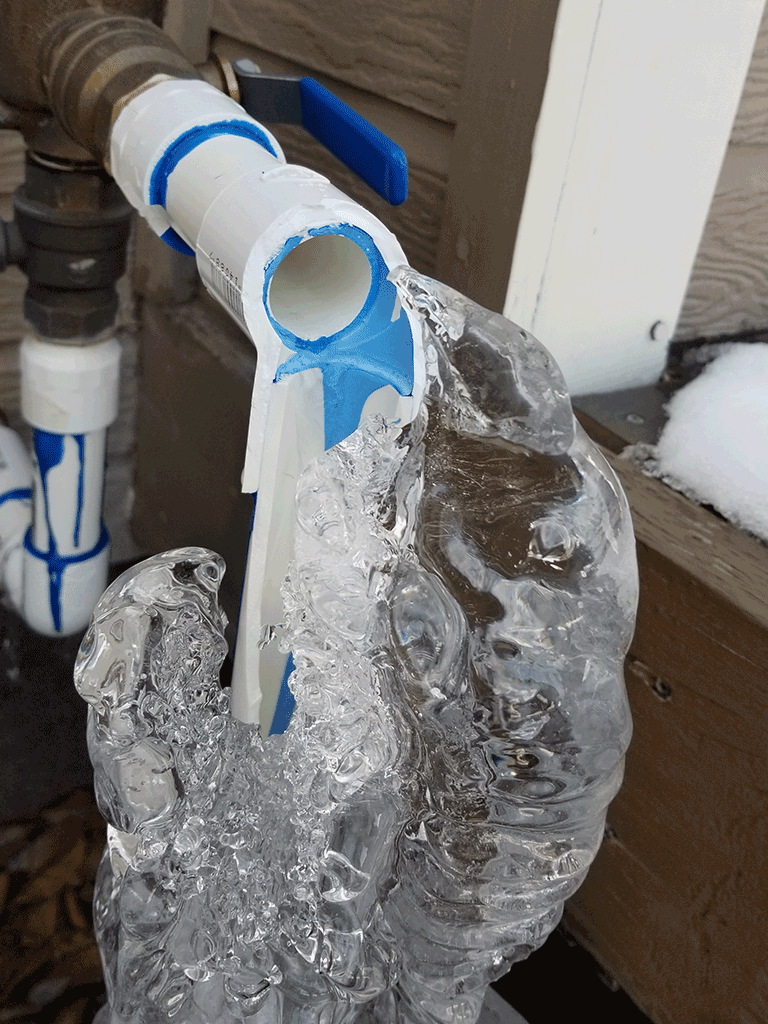Tips to Avoid Frozen Pipes in Cold Weather: Professional Guidance
Tips to Avoid Frozen Pipes in Cold Weather: Professional Guidance
Blog Article
What are your concepts on Winter Plumbing Precautions: Preventing Frozen Pipes?
:strip_icc()/snow-outdoor-faucet-pipes-4af65d1e5e904fb1aa7bf74071fe5d89.jpg)
Cold weather can damage your pipes, particularly by freezing pipes. Right here's just how to stop it from happening and what to do if it does.
Introduction
As temperatures decrease, the danger of icy pipelines increases, potentially leading to costly repair work and water damage. Understanding how to prevent icy pipelines is essential for property owners in cold climates.
Avoidance Tips
Protecting prone pipes
Cover pipelines in insulation sleeves or utilize heat tape to shield them from freezing temperature levels. Focus on pipelines in unheated or external areas of the home.
Heating strategies
Keep indoor areas adequately heated up, especially areas with pipes. Open cupboard doors to permit cozy air to distribute around pipelines under sinks.
Exactly how to identify icy pipelines
Try to find lowered water flow from taps, uncommon odors or sounds from pipelines, and visible frost on subjected pipelines.
Long-Term Solutions
Architectural adjustments
Consider rerouting pipelines far from outside walls or unheated areas. Include additional insulation to attic rooms, cellars, and crawl spaces.
Upgrading insulation
Buy high-grade insulation for pipelines, attic rooms, and walls. Proper insulation aids keep consistent temperatures and reduces the threat of frozen pipes.
Shielding Outside Pipes
Yard hoses and exterior faucets
Separate and drain yard hoses prior to winter. Set up frost-proof spigots or cover outside taps with insulated caps.
Recognizing Frozen Pipes
What creates pipes to freeze?
Pipes ice up when exposed to temperatures listed below 32 ° F (0 ° C) for expanded periods. As water inside the pipes ices up, it expands, putting pressure on the pipe wall surfaces and potentially triggering them to break.
Dangers and problems
Frozen pipelines can lead to water system disruptions, building damages, and expensive fixings. Ruptured pipes can flooding homes and trigger comprehensive structural damages.
Signs of Frozen Water Lines
Identifying icy pipelines early can prevent them from breaking.
What to Do If Your Pipelines Freeze
Immediate actions to take
If you believe icy pipelines, maintain faucets open up to soothe stress as the ice melts. Use a hairdryer or towels taken in hot water to thaw pipelines slowly.
Conclusion
Stopping frozen pipelines requires aggressive steps and fast reactions. By recognizing the causes, indicators, and safety nets, house owners can safeguard their pipes during winter.
5 Ways to Prevent Frozen Pipes
Drain Outdoor Faucets and Disconnect Hoses
First, close the shut-off valve that controls the flow of water in the pipe to your outdoor faucet. Then, head outside to disconnect and drain your hose and open the outdoor faucet to allow the water to completely drain out of the line. Turn off the faucet when done. Finally, head back to the shut-off valve and drain the remaining water inside the pipe into a bucket or container. Additionally, if you have a home irrigation system, you should consider hiring an expert to clear the system of water each year.
Insulate Pipes
One of the best and most cost-effective methods for preventing frozen water pipes is to wrap your pipes with insulation. This is especially important for areas in your home that aren’t exposed to heat, such as an attic. We suggest using foam sleeves, which can typically be found at your local hardware store.
Keep Heat Running at 65
Your pipes are located inside your walls, and the temperature there is much colder than the rest of the house. To prevent your pipes from freezing, The Insurance Information Institute suggests that you keep your home heated to at least 65 degrees, even when traveling. You may want to invest in smart devices that can keep an eye on the temperature in your home while you’re away.
Leave Water Dripping
Moving water — even a small trickle — can prevent ice from forming inside your pipes. When freezing temps are imminent, start a drip of water from all faucets that serve exposed pipes. Leaving a few faucets running will also help relieve pressure inside the pipes and help prevent a rupture if the water inside freezes.
Open Cupboard Doors
Warm your kitchen and bathroom pipes by opening cupboards and vanities. You should also leave your interior doors ajar to help warm air circulate evenly throughout your home.

We were made aware of that write-up about Helpful Tips to Prevent Frozen Pipes this Winter from an acquaintance on our other web page. Be sure to take the opportunity to promote this entry if you appreciated it. Thanks so much for your time invested reading it.
Information Here Report this page